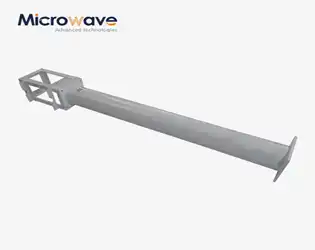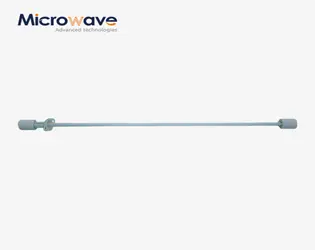BLOG

How Do High-Quality Materials Enhance the Durability of Circular Waveguide To Coaxial Adapters?
July 9, 2025
The durability of Circular Waveguide To Coaxial Adapters depends fundamentally on the quality of materials used in their construction. In high-frequency microwave applications, where signal integrity and long-term performance are critical, premium materials such as aluminum, brass, and copper alloys provide superior resistance to environmental factors, mechanical stress, and electromagnetic interference. These materials ensure that the Circular Waveguide To Coaxial Adapter maintains optimal performance characteristics over extended periods, delivering consistent VSWR performance and minimal signal loss. Advanced manufacturing techniques combined with high-grade materials create components that can withstand harsh operating conditions while maintaining precise electrical specifications. The careful selection of materials directly impacts the adapter's ability to handle high power levels, resist corrosion, and maintain structural integrity in demanding aerospace, defense, and telecommunications applications.
Which Industries Benefit Most from Wide-Band Waveguide Unmatched Termination Technology?
July 8, 2025
In today's rapidly evolving technological landscape, precise signal management has become critical across multiple industries requiring high-frequency microwave systems. Wide-band waveguide unmatched termination technology serves as a cornerstone component for maintaining signal integrity and preventing unwanted reflections in sophisticated communication networks. The growing demand for reliable microwave solutions spans from satellite communications to defense applications, where even minimal signal degradation can compromise entire system performance. Waveguide unmatched termination devices provide essential signal absorption capabilities, ensuring that high-frequency signals maintain their intended characteristics throughout transmission paths. As industries increasingly rely on advanced microwave technologies, understanding which sectors benefit most from these specialized components becomes crucial for engineers, procurement specialists, and system designers seeking optimal performance solutions.
How Does a Coaxial Detector Enhance Precision in Test and Measurement Equipment?
July 8, 2025
In the rapidly evolving landscape of microwave and RF technology, precision measurement capabilities form the backbone of reliable communication systems, advanced radar applications, and sophisticated test equipment. At the heart of these critical measurement systems lies a fundamental component that often determines the accuracy and reliability of the entire operation: the Coaxial Detector. This essential device serves as the bridge between high-frequency signals and measurable outputs, converting complex microwave energy into precise, analyzable data that engineers and technicians can interpret and utilize for system optimization, quality control, and performance validation across diverse industrial applications.
Why Do MMDS Transmitting Antennas Excel in High-Frequency Signal Handling?
July 8, 2025
Multi-channel Multipoint Distribution Service (MMDS) technology represents a critical component in modern telecommunications infrastructure, particularly in applications requiring efficient high-frequency signal transmission. The exceptional performance of MMDS Transmitting Antennas in handling high-frequency signals stems from their sophisticated engineering design, advanced materials, and precision manufacturing processes. These antennas are specifically engineered to operate across wide frequency ranges while maintaining optimal signal integrity, minimal transmission loss, and superior radiation efficiency. The MMDS Transmitting Antenna technology incorporates advanced microwave engineering principles that enable reliable signal propagation even in challenging environmental conditions, making them indispensable for telecommunications, broadcasting, and defense applications where signal quality and consistency are paramount.
Why Is the Double Ridged Waveguide To Coaxial Adapter Perfect for Compact Applications?
July 8, 2025
In today's rapidly evolving microwave technology landscape, space constraints and performance demands continue to challenge engineers across satellite communications, aerospace, and defense industries. The Double Ridged Waveguide To Coaxial Adapter emerges as the optimal solution for compact applications, offering exceptional versatility through its unique design that seamlessly bridges the gap between waveguide systems and coaxial cables. This innovative component delivers superior performance in space-critical environments while maintaining the high-frequency capabilities essential for modern communication systems, making it indispensable for applications where every millimeter matters.
What Are the Key Advantages of Using a Pyramid Horn Lens Antenna?
July 8, 2025
Pyramid Horn Lens Antenna technology represents a significant advancement in microwave antenna design, combining the directional capabilities of horn antennas with the focusing power of optical lenses to deliver exceptional performance across multiple applications. These sophisticated antennas offer enhanced signal quality, superior gain characteristics, and reduced sidelobe levels compared to conventional horn antennas. By integrating a planoconvex lens with a pyramidal horn structure, this innovative design achieves shorter axial dimensions while maintaining excellent radiation patterns and polarization purity, making it an ideal choice for satellite communications, aerospace systems, and defense applications where precision and reliability are paramount.
How Do Our Precision Connectors in Coaxial Cable Assemblies Ensure Superior Signal Transmission?
July 7, 2025
In today's rapidly evolving technological landscape, the demand for reliable, high-performance signal transmission solutions has never been more critical. At Advanced Microwave Technologies Co., Ltd, we understand that the backbone of any successful RF communication system lies in the precision and quality of its components. Our Coaxial Cable Assembly solutions represent the pinnacle of engineering excellence, combining decades of microwave expertise with cutting-edge manufacturing techniques. These assemblies serve as the vital link between various RF components, ensuring that signals maintain their integrity from source to destination. With over 20 years of experience in microwave products and laboratories equipped with advanced measurement equipment up to 110 GHz, we have developed precision connectors that not only meet but exceed industry standards, delivering superior signal transmission across frequencies ranging from DC to 110 GHz while maintaining exceptional durability and performance reliability.
How Does Broad Frequency Compatibility Benefit Double Ridge Transition Users?
July 7, 2025
In the rapidly evolving landscape of microwave technology, the Double Ridge Transition stands as a cornerstone component that revolutionizes how engineers approach frequency management and system integration. This sophisticated waveguide technology addresses one of the most persistent challenges in RF engineering: achieving seamless signal transmission across extended frequency ranges while maintaining optimal performance characteristics. The broad frequency compatibility inherent in Double Ridge Transition systems offers unprecedented versatility, enabling engineers to design more efficient, cost-effective solutions that can adapt to diverse operational requirements. From satellite communications to advanced radar systems, these transitions have become indispensable tools for modern microwave applications, providing the flexibility and reliability that today's demanding applications require.




